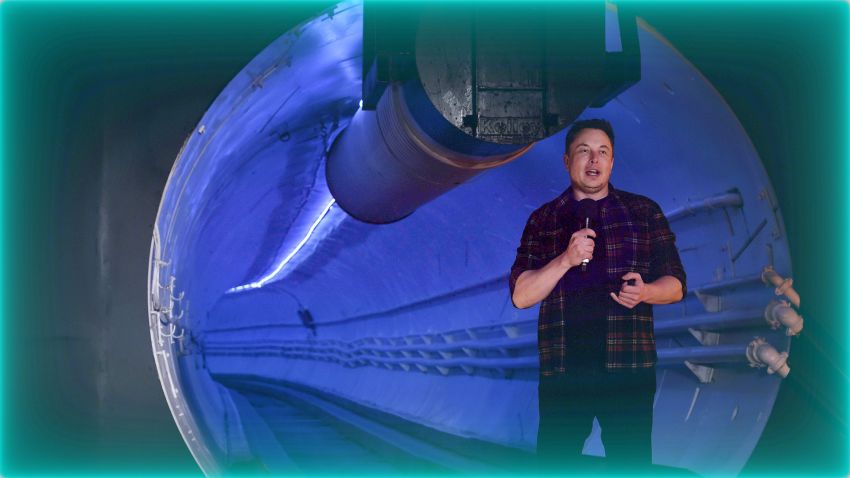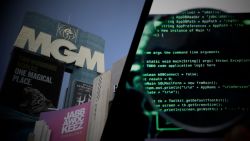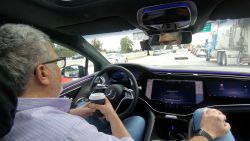This story is part of CNN Business’ Nightcap newsletter. To get it in your inbox, sign up for free, here.
All right: Let’s talk about “quiet quitting,” the buzzy catch-all phrase that’s not so quietly taken over work culture conversations in recent weeks.
It is not new, nor is it actually quitting, but it is a crystallization of a moment worth reflecting on as office life evolves in the pandemic era.
In short, quiet quitting means doing the bare minimum at work. You do what you’re asked, and you do it competently, nothing more. That shouldn’t be controversial, but it’s struck a nerve, inviting a deluge of hot takes.
At its core, quiet quitting is a rejection of hustle culture, a backlash to the #riseandgrind lifestyle that places work at the center of one’s orbit and ultimately leads to burnout.
Here’s the thing: A lot of us — and by “us” I mean people raised under post-industrial Western capitalism, in an era of relative generational privilege in which the cultural messaging about work shifted radically toward the notion that each individual human is special and can be or do anything they want as long as they put in the work and never stop following their dreams — are tired.
Tired of leaning in. Tired of feeling guilty about taking vacation. Tired of the nine-to-five that’s more like a nine-to-seven-or-eight most days. Tired of panic attacks in the middle of the night over an email that may or may not have hit the right tone.
The solution, for some, is just to opt out of all the extra emotional baggage that can accompany a job.
Again, that’s not a new concept — fans of the 1999 movie “Office Space” may recall that Gen X was “quiet quitting” long before social media made it a trend. But the idea is taking off because of underlying social and economic forces that have transformed our relationship with our jobs since the start of the pandemic.
- For one: Millions of workers have physically untethered themselves from the office. Pre-pandemic, your job set up the structure of your day — you commuted, you spent eight hours (minimum) at your desk, you went home. When that imploded, it shook our concept of what work is.
- The upshot for many, especially Millennial and Gen Z knowledge workers, is understanding work as a transactional relationship, and nothing more.
- The labor market shifted. For Millennials who graduated into the Great Recession, the threat of being laid off was always hanging over us. But right now, the labor market has never been stronger. The Great Resignation (there’s another pandemic-era buzzword for you) means that people feel confident, some for the first time in their careers, that they won’t lose their jobs. And confident that if they do, there’s another, possibly better-paying one, waiting on the other side.
- If you were lucky enough to get a job out of college 15 years ago, chances are you had to work double time to prove you were worth keeping. For some people, quiet quitting is just taking a foot off the accelerator.
Of course, there’s no shortage of handwringing out there about how this is just another lazy young-person trend, a Gen Z scourge, a fad carried out by a bunch of entitled brats who are ruining their career prospects.
That is, of course, missing the point.
Quiet quitting isn’t quitting the job, it’s quitting the really crappy parts of the job. And that’s unquestionably a good thing.
Bosses who are worried about quiet quitting might want to look inward for a moment. If your staff are rejecting a life of juggling emails while ostensibly on vacation, or endless meetings, or grueling hours, maybe it’s the demands of corporate life that need to change and not the attitudes of the people who dare to opt out of the grind.
NUMBER OF THE DAY: 18%
British consumer price inflation is set to peak above 18% — nine times the Bank of England’s target — early next year, Citibank economists said in a note to clients, citing Europe’s escalating gas crisis. That would be the highest rate among Western economies, and well above the Bank of England’s forecast earlier this month that inflation would hit 13% by the end of this year.
CRASH TEST DUMMIES
Tesla fans are trying to set the record straight on the car’s “full self driving” technology – a $12,000 add-on that, despite its name, does not actually allow the car to drive itself.
So they’re doing what any reasonable human would do to make a point: putting their children in front of moving vehicles.
For the uninitiated: Tesla’s “full self-driving” beta software allows the car to steer, brake and accelerate, but requires an attentive human driver ready to take the wheel. It is riddled with flaws and inconsistencies that have raised alarms among safety regulators and industry experts.
One such critic, Dan O’Dowd, published a video earlier this month apparently showing Teslas in “full self-driving” mode repeatedly mowing down child-size mannequins. O’Dowd calls FSD the “worst commercial software I’ve ever seen” and wants it banned.
But some Tesla zealots say FSD has been unfairly criticized, and they’re recruiting their own kids (and kid-size mannequins) to prove it, as my colleague Matt McFarland reports.
In one video, Carmine Cupani drives 35 mph in a parking lot, with his 11-year-old son standing in the car’s path. Using, FSD, the Tesla brakes steadily and stops well ahead of the boy. Cupani did another test with his son on a street using Autopilot, the more rudimentary Tesla driver-assist software, and found it stopped for his son, too.
Enough people are apparently doing this that the National Highway Traffic Safety Administration took the extraordinary step of warning people to, like, not put children in front of moving cars.
BIG PICTURE
Perhaps more than any other car in history, Tesla tends to whip up its critics and proponents into a kind of tribal furor. There are Tesla die-hards who think the technology behind FSD is nearly perfect. And there are never-Teslas who dislike the man behind the wheel, CEO Elon Musk, saying he’s unleashed an unfinished technology into the wild recklessly.
But whatever people feel about FSD or Tesla or Musk, at the end of the day there is still no industry testing body that examines the code for “full self-driving.” The US government has no performance standards for automated driver-assist technology like Tesla’s rudimentary “Autopilot.”
Somehow we’ve hit a point where we’re just trusting Tesla and troubleshooting its technology out in the wild.
“We’re using absolute, Wild West chaos rules,” O’Dowd told Matt in an interview. “And we’ve gotten something that is so terrible.”
RELATED: Tesla is raising the price of its “full self-driving” feature to $15,000 from $12,000.
Enjoying Nightcap? Sign up and you’ll get all of this, plus some other funny stuff we liked on the internet, in your inbox every night. (OK, most nights — we believe in a four-day work week around here.)
























